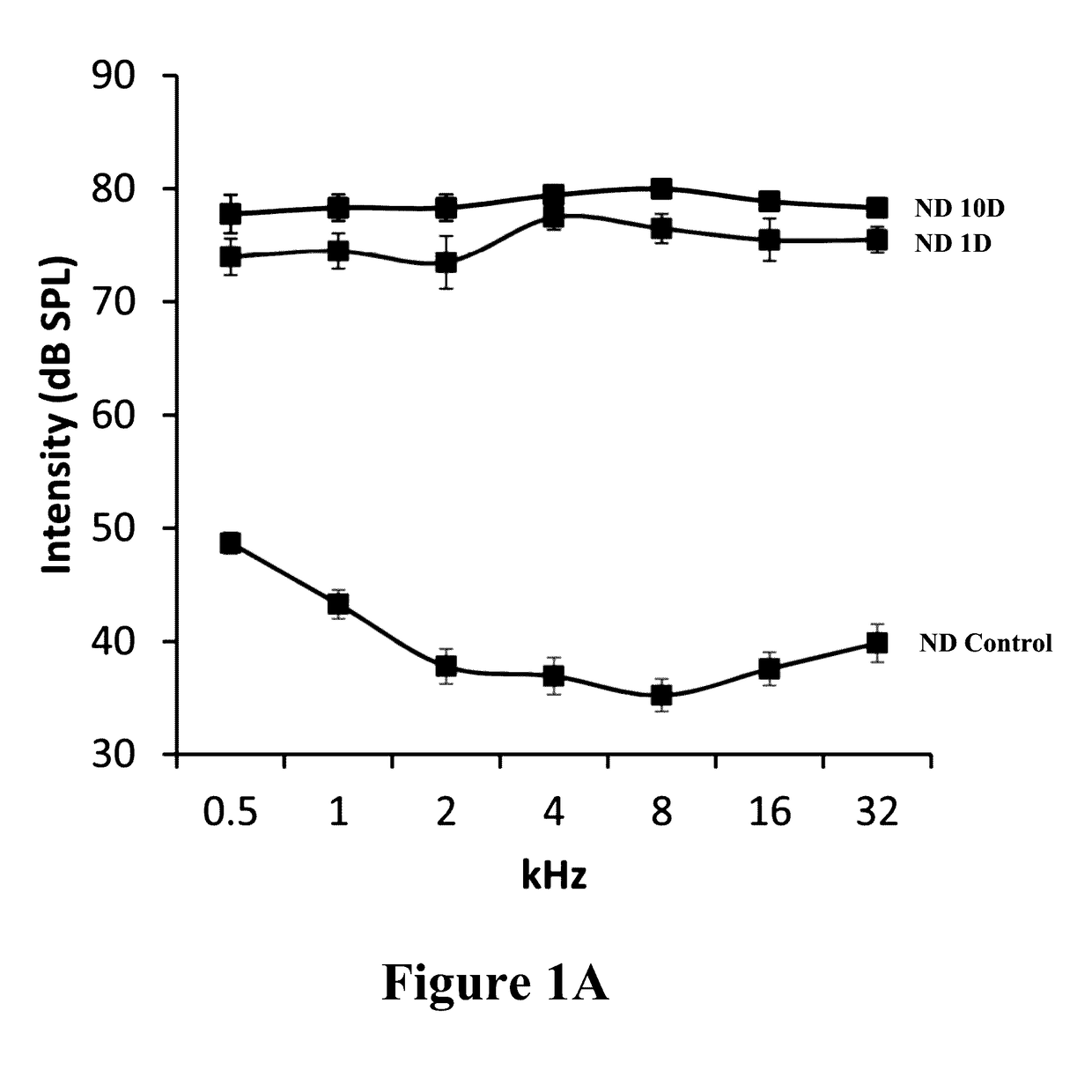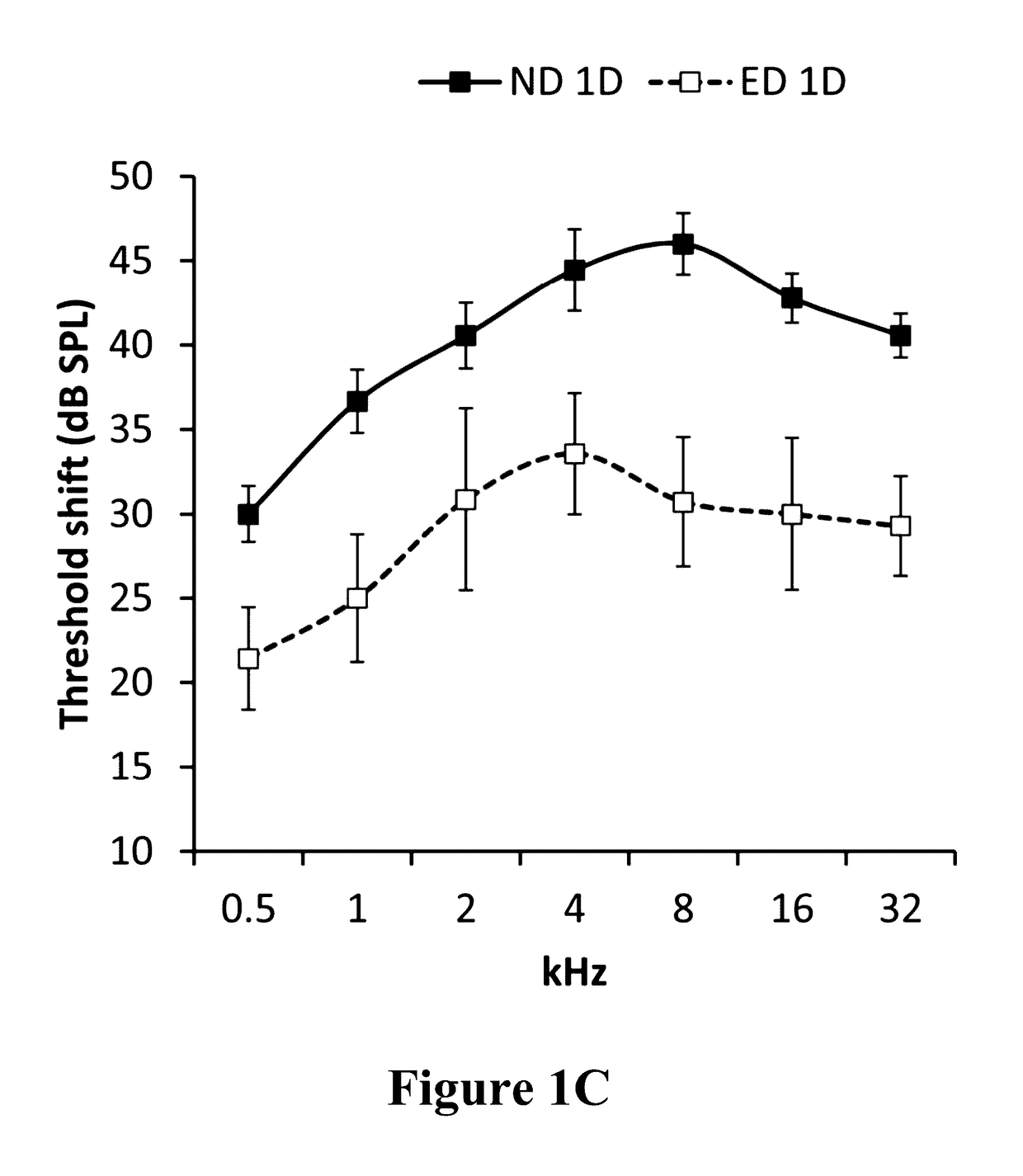Method for Treating Noise-Induced Hearing Loss (NIHL)
a technology for hearing loss and hearing loss, applied in the direction of pharmaceutical delivery mechanism, aluminium/calcium/magnesium active ingredients, organic active ingredients, etc., can solve the problems of disabling hearing impairment, more than twenty million united states workers are typically exposed to potentially hazardously high noise levels, and about one-third of returning military personnel have suffered disabling hearing impairments. , to achieve the effect of inhibiting the propagation of lipid peroxidation, reducing free radicals, and reducing
- Summary
- Abstract
- Description
- Claims
- Application Information
AI Technical Summary
Benefits of technology
Problems solved by technology
Method used
Image
Examples
Embodiment Construction
[0020]A composition for treating noise-induced hearing loss (NIHL) includes components that may function through different biological mechanisms to provide an additive effect that is equal to or greater than a sum of the effect of the individual components. The composition used by the method is typically used for treating NIHL that may result from repeated exposure to high levels of noise or sound stress to an inner ear of a mammal. The stress may be further defined as mechanically-induced metabolic trauma, mechanical / metabolic trauma, stress trauma, stress-induced damage, and / or environmental stress. The stress may also reflect a downregulation of inner ear blood flow and endogenous antioxidant systems that occur gradually with malnutrition, cardiovascular disease, certain genetic disorders, smoking, and aging. This may increase the sensitivity of the inner ear to pathology that would be well below a threshold for damage to a healthier and / or younger ear. It is possible that the co...
PUM
| Property | Measurement | Unit |
|---|---|---|
| frequencies | aaaaa | aaaaa |
| weight | aaaaa | aaaaa |
| body weight | aaaaa | aaaaa |
Abstract
Description
Claims
Application Information
 Login to View More
Login to View More - R&D
- Intellectual Property
- Life Sciences
- Materials
- Tech Scout
- Unparalleled Data Quality
- Higher Quality Content
- 60% Fewer Hallucinations
Browse by: Latest US Patents, China's latest patents, Technical Efficacy Thesaurus, Application Domain, Technology Topic, Popular Technical Reports.
© 2025 PatSnap. All rights reserved.Legal|Privacy policy|Modern Slavery Act Transparency Statement|Sitemap|About US| Contact US: help@patsnap.com



